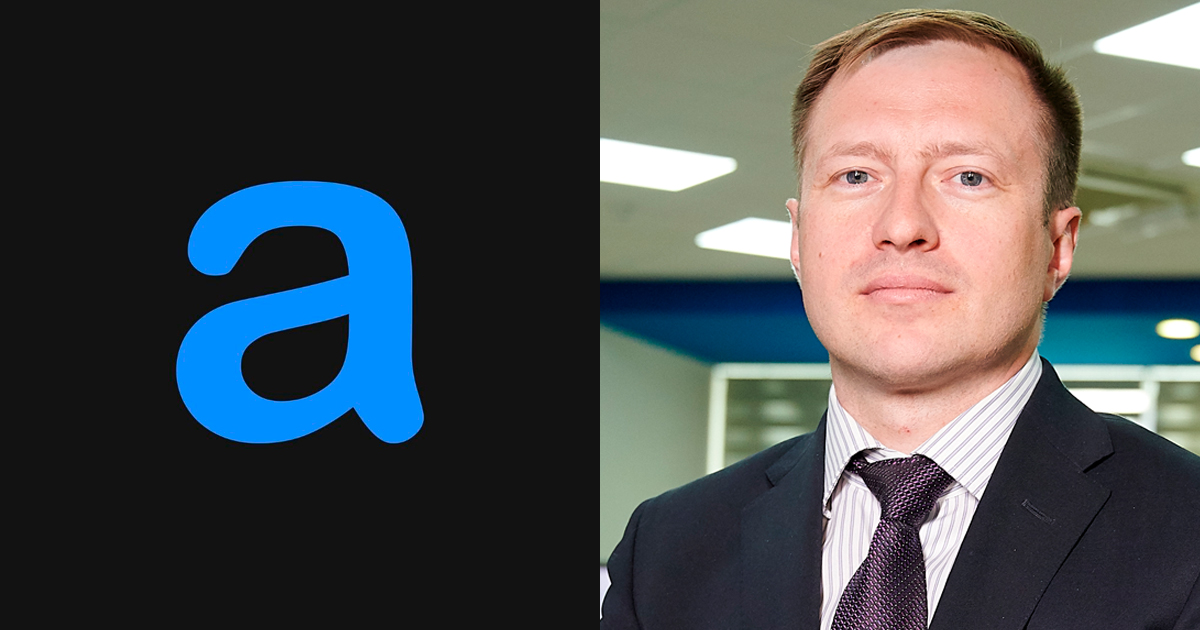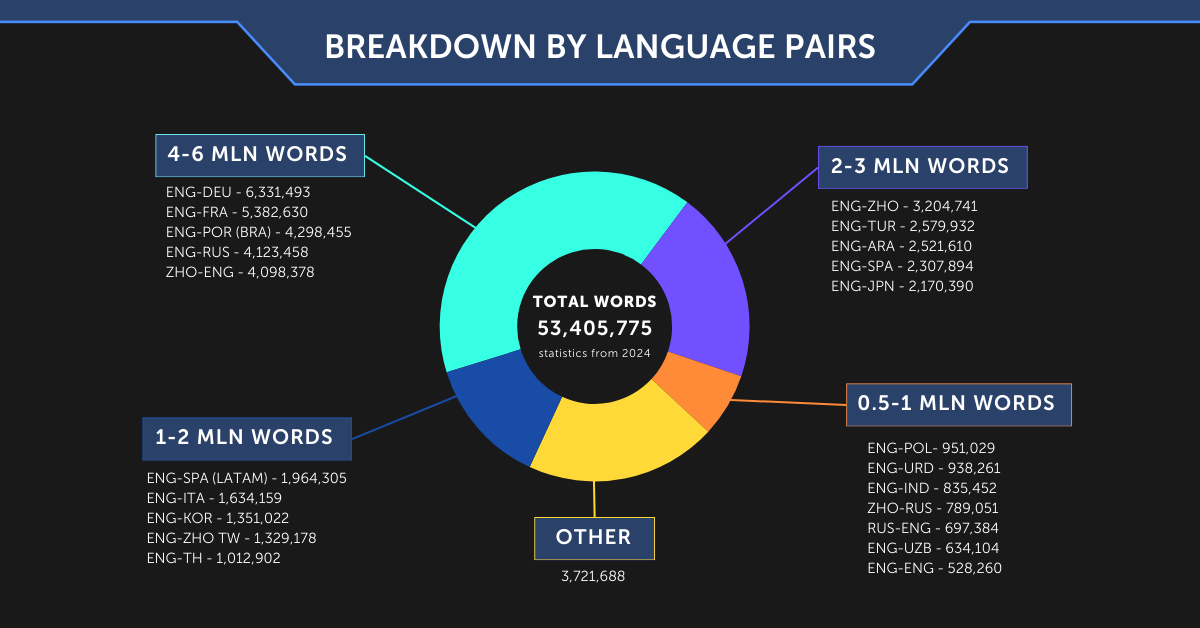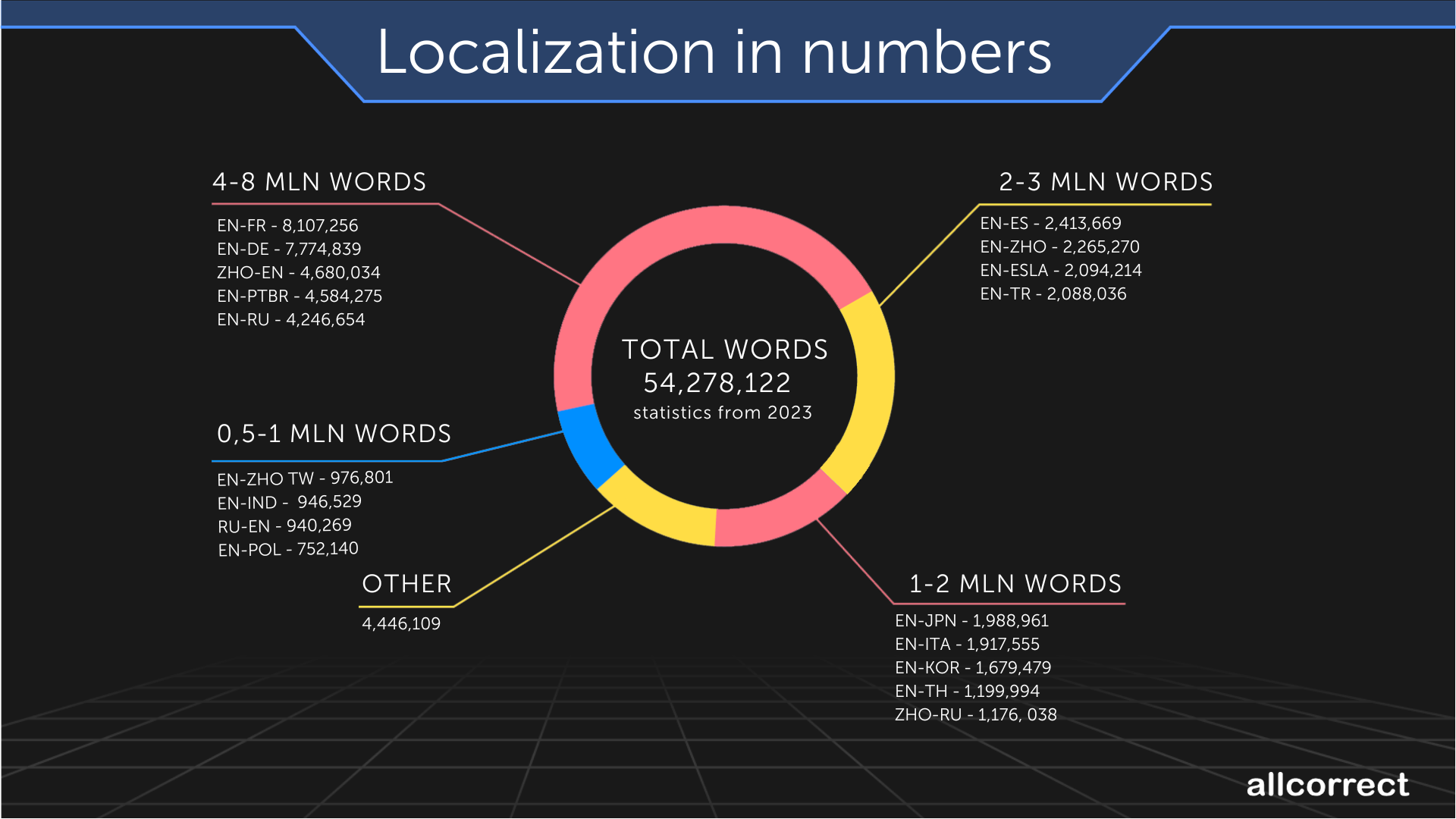We continue to wrap up the year 2024 alongside gaming and industry-related teams. Up next is an interview with Denis Khamin, co-owner of the game localization and 2D/3D art outsourcing studio, Allcorrect.
How was the year for the company? What achievements would you like to highlight?
This year was hectic: layoffs in the gaming industry continued, with loud successes juxtaposing equally loud failures.
The more new projects are launched, the better we feel, yet in 2024, clients were still not ready to take risks, and investors were reluctant to support ambitious developers' ideas.
Nevertheless, we managed to reverse the downward trend, and by the end of the year, we plan to earn $7.6 million — slightly more than the $7.5 million earned last year. A significant contribution to this achievement comes from our art division, which quadrupled its revenue compared to 2023.
Moreover, we significantly expanded our team, bringing in talented specialists with unique experience and fresh ideas. This enables us to confidently plan for capacity expansion next year.
This year, we also participated in Gamescom for the first time in a new capacity — we had a cozy spot at the Serbian Gaming Association’s booth, complete with ćevapi and rakija. An amazing experience! If you're heading to Gamescom next time, I highly recommend visiting this booth, especially in the afternoon.
How did the game localization market change over the year?
In 2024, we translated more into German than French, there was an increase in localization requests in traditional Chinese, Thai overtook Indonesian in popularity, and Arabic became one of the mandatory localization languages.
Also, previously exotic languages like Urdu and Uzbek became so popular that they made it into our visible statistics.
This year, we broke down the genres of games we localized for the first time. Of course, games often combine several genres, but according to our data, we seem to be quite competent in survival and role-playing games.
Artificial intelligence is actively infiltrating localization processes, and we are still looking for the optimal balance in its application. In administrative tasks, AI is used everywhere possible. In localization, its application is limited to processes where it truly improves translation quality. In the art division, AI is used selectively — for concept idea generation or reference selection for clients.
Has the practice of working with game companies changed? In what ways?
The trends from the past year continue: gaming companies remain cautious and focused on attracting investors.
What trends in game localization do you expect to strengthen or appear in 2025?
Current trends continue to evolve. We observe a growing demand for rare languages that were almost never ordered before (e.g., Uzbek, Urdu).
Our art division is still too young to note significant changes in client work practices. However, we see that expenses for art have become more meticulously calculated. We believe that our ability to meet deadlines and budgets gives us a competitive edge and growth potential.
Besides this, we anticipate a clearer distinction between human translation and AI-assisted translation. We hope that machine translation will no longer be passed off as cheap human work, and everyone will clearly understand what exactly they are purchasing for 10 cents per word versus 17 cents.
One possible trend is the deglobalization and clustering of markets caused by increased regulation by national governments, protectionist measures, and sanctions. We are already seeing this with Russia, and the hypothetical ban on American studios working with Chinese art outsourcers no longer seems far-fetched.
What are the company's plans for next year?
Each year, we test 2–3 business hypotheses that could grow into separate ventures. This year's hypotheses did not justify themselves, but we have already identified two promising ideas for the next period.
We also plan to actively develop our art division, with a focus on 3D. Additionally, we are exploring opportunities for closer work in Asia and the USA, aiming to make our presence in these markets more noticeable through marketing promotion.




